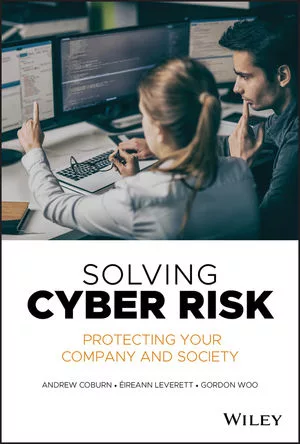Cyber insurers are starting to require lateral movement defense. Here’s why

Image by Freepik
We often define the risks of cyber threats with huge numbers, like the $4.62 million average payment after a ransomware breach or the 623.3 million ransomware events in 2021, by one report’s estimate, which it said was a 105% increase over 2020. Those big figures aren’t the only consequence of lax security.
Cyber insurers are ready to drop coverage and stop writing new policies if companies don’t up their security game.
We have already seen insurers halve the amount of cyber coverage they provide to customers as a result of big ransom payouts. According to the most recent report on cyber insurance by the National Association of Insurance Commissioners, the loss ratio for the top 20 insurance groups in 2020 averaged 66.9%, up from 44.6% in 2019.
As a result of their big losses, insurers are raising premiums and starting to require customers to defend against lateral movement — when an attacker breaches a network, then uses privileged credentials to propagate — with tools like multi-factor authentication (MFA) on internal assets and endpoint detection and response (EDR).
EDR is only part of the solution — it is the minimum requirement. Most companies don’t know they need lateral movement defenses or how they might be tied to their insurance coverage; many believe having EDR and MFA is enough. If organizations want to purchase or keep cyber insurance, here’s what security leaders should know and put in place.
How threat actors move laterally
Lateral movement is involved in just about every security breach. Threat actors land on an endpoint, harvest the most privileged credentials and leverage them to move throughout the environment, hopping from servers to storage infrastructure and finding whatever sensitive data they can.
PrintNightmare, the Microsoft print spooler remote code execution vulnerability, is one example. As the Cybersecurity and Infrastructure Security Agency (CISA) explained in an advisory, Russian state-sponsored hackers exploited the vulnerability and a misconfigured account with default MFA settings to breach a non-government organization.
Threat actors are also harvesting privileged credentials through password caches that live on endpoints. Very few companies are limiting endpoints’ password caches, giving attackers an easy means to collect sensitive credentials. Once attackers access the endpoint, they crack those caches and start logging into servers and moving wherever they’d like.
Cyber insurance carriers are now requiring customers to have MFA not just on network ingress points, but also to access critical assets internally. If organizations have proper lateral movement defense, zero day vulnerability risks will be limited in their ability to allow threat actors to move laterally because any authentication event to gain administrative control will prompt an MFA challenge even though they’re already inside the network.
How companies can fight back
There are two ways to satisfy the requirements that insurance carriers are starting to make, but organizations and their security teams should be doing both.
The first is to deploy MFA not just on endpoints or remote desktop protocol (RDP) but also on other applications like PowerShell, Microsoft Management Console, universal naming convention paths, and Windows Remote Registry. Essentially, anything that can remotely control a server needs to have MFA applied.
A second way to limit lateral movement is the concept of “jumping,” which is also referred to as jump box, jump host, or jump server. In this scenario, organizations can configure servers, storage, switches, routers, and firewalls to only be administered from specific IP addresses. But it’s not enough to just have a jumping platform; it needs to be supplemented with a privileged access management (PAM) tool and a password vault.
Those vaults would then change passwords regularly, so all highly privileged accounts are continuously updated. That way, if the IT admin needs to log in, the tool actually injects the passwords into the remote access connections, so the admin never has to know what the privileged passwords are.
A new marketplace for cyber insurance
Requiring extra controls is just one part of cyber insurers’ attempts to limit their own risk as demand for coverage continues its steady hike.
Last November, Lloyd’s Market Association’s (LMA) Cyber Business Panel drafted four policy exclusion clauses that broadened the definitions of War, Cyber War, and Cyber Operation. Merck was recently awarded $1.4 billion in a legal dispute with its insurer over whether being hit with a NotPetya attack was an act of war. Ransomware payments are rising, and insurers are looking for financial relief.
All this has changed the marketplace for insurance and how companies get coverage.
In the private sector, it’s usually the chief financial officer, chief of risk, or general counsel that makes the determination on cyber insurance. In government, it’s typically the general counsel, prosecutor’s office, or county/city’s legal office. None of those titles are synonymous with IT practices or security principles. Often, the right questions are not asked when talking with insurance carriers, as those managing the policies don’t fully understand the risks until they get an assessment from a cybersecurity professional.
Business leadership — including risk managers, general counsel and executives — should require, at minimum, an annual technical control assessment to regularly present the risks at play within their associated organizations.
Looking for a reprint of this article?
From high-res PDFs to custom plaques, order your copy today!








